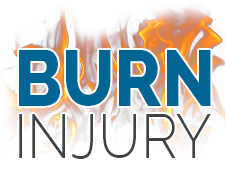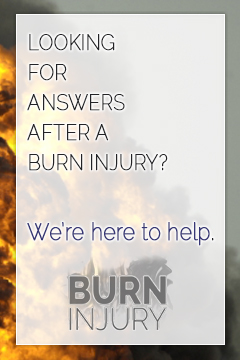Third and Fourth Degree Burn
Third and fourth degree burns are extremely severe burns that should be treated as soon as possible by medical professionals. Third degree burns affect tissues and nerves, and fourth degree burns may even extend into bone. Due to nerve damage, patients may not feel any pain when suffering from third or fourth degree burns.
Third and Fourth Degree Burn Causes
Third and fourth degree burns are typically caused by prolonged exposure to the source of the burn, such as fire, chemicals, or hot liquid. In some cases, exposure to an intense burst of electricity or ultraviolet rays will cause third or fourth degree burns. Failure to treat burns quickly can also allow some burns of lesser severity to worsen.
Third and Fourth Degree Burn Symptoms
Third and fourth degree burns are identifiable by the deterioration of skin and exposure of underlying tissues. Third degree burns will expose the adipose, or fat, tissue beneath the dermis layer of skin. Fourth degree burns may expose muscle tissue or even bone. Both types of burns will result in partial or total burning away of the skin in the area, and the surrounding skin will often appear blackened and charred.
Burn Risks
Third and fourth degree burns have a high risk of infection and may cause the patient to go into shock. If major blood vessels are destroyed by burns, lack of blood circulation may result. This can cause dehydration and lack of oxygen, or complications from low blood volume.
Damage to tissue, blood vessels, and bones can result in permanent damage to limbs. In some cases, infection may enter the blood stream and cause sepsis, which can be life threatening. In the case of fourth degree burns, the hypodermis may be burned away. The hypodermis is the deepest layer of skin that is closest to the muscles. The burning away of this layer may cause compartment syndrome, resulting in further nerve and muscle damage. In severe cases, excessive burns can cause death.
Treating Third and Fourth Degree Burns
Third and fourth degree burns must be treated by medical professionals. First aid solutions that may be helpful in cases of lesser burns, such as running water, may present complications in the case of third and fourth degree burns. Cooling large areas of burned skin too quickly can cause hypothermia, as natural defenses are not present to allow the body to return the body to normal temperature.
Medical Treatment
Once the patient has been transported to a medical facility, physicians can begin treating the burns and resolving complications from the burns. The patient may receive intravenous fluids to prevent dehydration and antibiotics to prevent infection. Physicians will often use skin grafts or other surgical procedures to recreate the protective layer of skin that was burned.
Sources:
“Burns.” MedLine Plus. U.S. National Library of Medicine, 31 Oct 2013. Web. 19 Dec 2013. <http://www.nlm.nih.gov/medlineplus/ency/article/000030.htm>.
“Burn Treatment.” Fourth Degree Burn. Fourth Degree Burn, n.d. Web. 19 Dec 2013. <http://www.fourthdegreeburn.net/category/burn-treatment/>.
“Compartment Syndrome.” PubMed Health. U.S. National Library of Medicine, 11 Aug 2012. Web. 19 Dec 2013. <http://www.ncbi.nlm.nih.gov/pubmedhealth/PMH0002204/>.
“Fire Deaths and Injuries: Fact Sheet.” Centers for Disease Control and Prevention. Centers for Disease Control and Prevention, 11 Oct 2011. Web. 19 Dec 2013. <http://www.cdc.gov/homeandrecreationalsafety/fire-prevention/fires-factsheet.html>.













